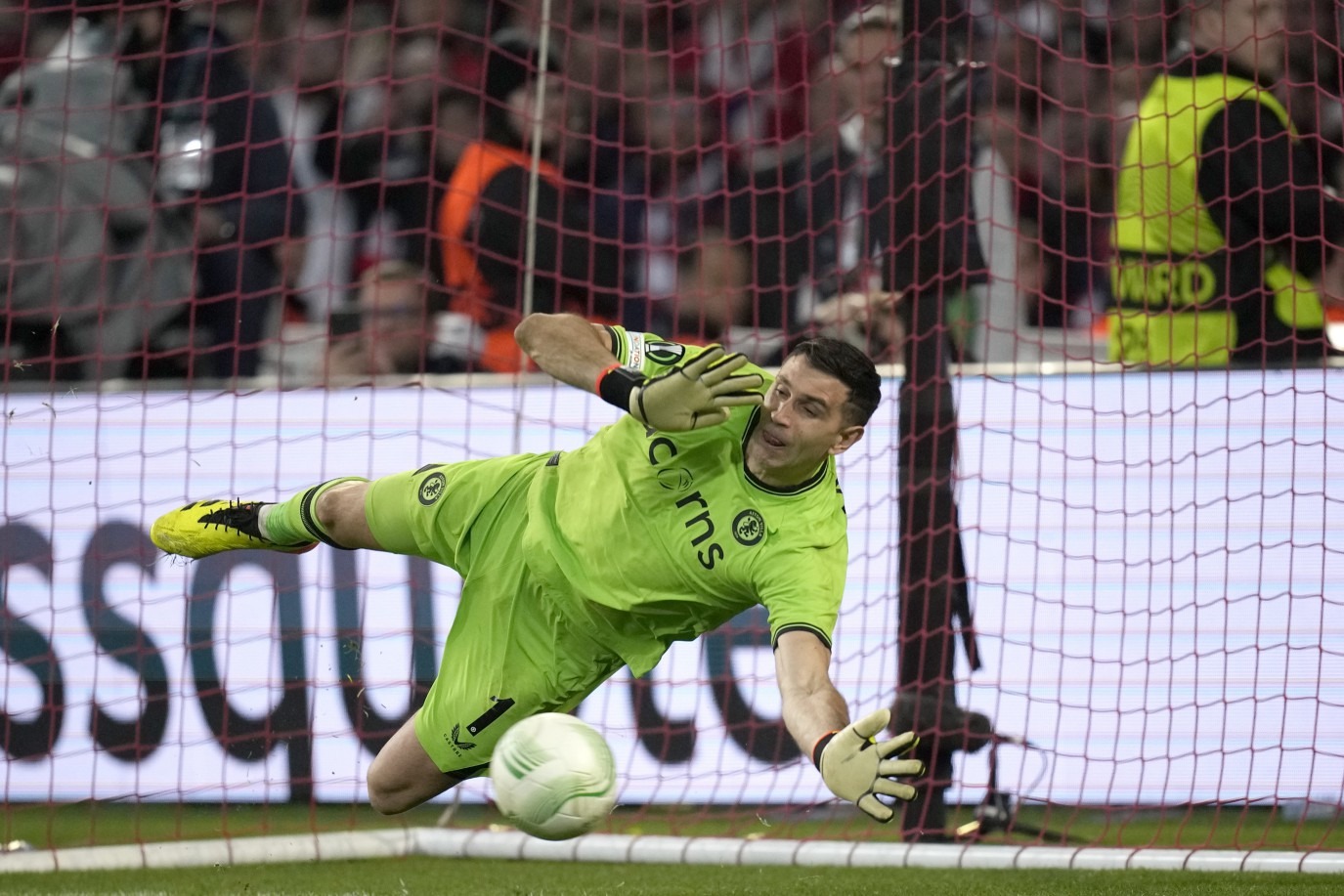What happened on the pitch?
Aston Villa secured their spot in the Europa Conference League semi-finals after a thrilling victory over Lille that went to a penalty shootout. Emi Martinez, the hero of the shootout, was at the center of some controversy during the match.
Why wasn't Martinez sent off?
Despite receiving two yellow cards during the game, Emi Martinez managed to stay on the pitch. The Argentine goalkeeper was first booked for timewasting in the 39th minute and then received another yellow card during the penalty shootout. However, according to IFAB law 10, yellow cards from the match and extra time do not carry over to penalty shootouts, allowing Martinez to continue playing.
Post-match reactions
After the game, Martinez reflected on the intense match, stating, "It’s been a hell of a ride all my career. I’m a believer and I’m a hard worker and it was my destiny to win here again." He also addressed the booking for timewasting, mentioning, "I’ve got a reputation for time wasting but the other goalkeeper was doing the same but I got booked. There was no ball on the penalty spot so I was asking the ball boy for one. I don’t understand the rules."
Martinez praised his teammates and the support from the managers and owners, expressing his dedication to pushing the football club forward. Despite the confusion surrounding his yellow cards, Martinez's performance helped Aston Villa progress to the semi-finals of the Europa Conference League.
Frequently Asked Questions
How do I know if my football boots fit properly?
If you want to ensure that your football boot fits properly, it should not be too tight. It should allow some movement of the foot without causing the boot to slip. If you want to prevent squeezing your toes in the boot while running or when kicking, leave about a half-thumb’s distance between the toes. The width of the foot is also important. Choose a boot with a wide or narrow fit. Try on your boots with socks, and make sure they are fully laced.
What factors should I take into consideration when selecting a ball?
Consider the size of the ball, its material, and its construction. Size 5 is the standard for players aged 12 and above, including adults. Children should wear smaller sizes that are appropriate to their age. Leather is best for grassy surfaces, while synthetics are better for more rough surfaces. Additionally, thermal-bonded footballs offer better waterproofing and shape retention compared to stitched options. Durability and flight stability should also be considered.
What are some of the essential items needed to play football?
A jersey or shirt is required to play football, as are shorts with stockings. Shin guards and football boots, or cleats. Goalkeepers often require extra gear, such as gloves or padded clothing that protects them from injuries during dives and leaps. It’s imperative for players to wear the correct attire to maintain safety and comply with the rules of the sport.
How do I choose football boots according to my playing surface?
Selecting the right type of football boot is determined by the type surface you plan to play on. Metal studs are recommended for natural grass pitches (FG, firm ground), as they offer traction and stability. For artificial grass, boots with multiple small rubber spikes (AG- artificial grass) and a flat bottom (TF- turf) offer traction and reduce the chance of injury. Indoor courts require rubber soles with non-marking properties to allow for adequate movement while preventing damage to the court surface.
Why are shinguards compulsory for footballers?
Shin guards for footballers are mandatory as they offer vital protection to lower legs that are susceptible to injury in collisions and tackles. They protect the shins by preventing severe injuries like fractures and severe bruising. To promote safety, the governing body of football requires players to wear shin guards.
Statistics
- A survey found that nearly 80% of football players believe that high-quality football socks are essential for optimal performance.
- Globally, the demand for lightweight football cleats has risen by about 30% in the past decade, reflecting changes in player preferences and playing styles.
- Goalkeeper gloves with advanced grip technology have been adopted by 85% of professional goalkeepers in top leagues around the world.
- Research has indicated that around 60% of football-related ankle injuries could be mitigated with the correct choice of footwear.
- Studies show that the proper use of shin guards can reduce the risk of injuries in football players by up to 70%.
External Links
footy.com
decathlon.co.uk
adidas.com
prodirectsoccer.com
puma.com
How To
How to select goalkeeper gloves that will maximize performance
The right goalkeeper glove can make all the difference. Grip is important in all weather conditions. Latex palms provide the best grip. Fit should be snug but allow for movement without slipping. Gloves that have finger protection can reduce the risk of injury from hyperextension. You should also consider the type padding. A thicker pad can provide more protection but reduce the feel of the football. Also, pay attention to wrist support; a secure strap will keep the gloves in place during dives.

